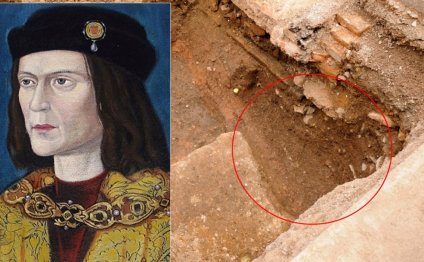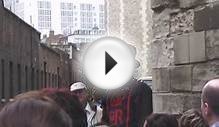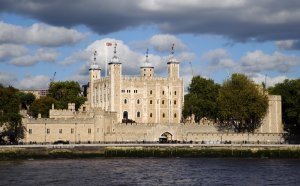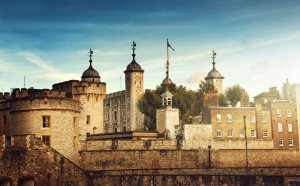
Who died in the Tower of London?
Executions by Beheading
Death by beheading with the use of the axe could be a terrifying prospect. The executioners often took several blows before the head was finally severed. If the executioner' axe was sharp and his aim was true, beheading was quick and relatively painless. If the instrument was blunt, the axeman inexperienced or careless, then the execution might take several strokes to sever the head. This was certainly the case in the execution by beheading of the brave Countess of Salisbury who was struck eleven times with the axe before she died.
Executions by Beheading - the Traditions
Various traditions were observed at executions by beheading. A raised platform was built (scaffold) and covered with straw. A minister of the church would be available to offer religious comfort to the victim. The victim would be expected to pay and forgive the executioner. It would be hoped that the headsman completed his job swiftly and with care. The condemned prisoner was usually given the opportunity to address the spectators - with the King's permission. The heads of traitors were displayed on top of spikes on London Bridge.
Executions by Beheading - Showing the head to the crowd?
Following execution the severed head was held up by the hair by the executioner. This was done, not as many people think to show the crowd the head, but in fact to show the head the faces of crowd and it's own body! Killing by beheading is not immediate. Consciousness remains for at least eight seconds after beheading until lack of oxygen causes unconsciousness and eventually death.
Executions of the Tower of London Prisoners - Tower Hill or Tower Green
The type of executions of the Tower of London prisoners depended on the severity of the crime and whether the prisoners were members of the higher or lower classes - most executions were conducted in public. The vast majority of Tower of London prisoners who were sentenced to death met their end in public on Tower Hill. But private executions of Tower of London prisoners were conducted behind the walls of the Tower if the execution was considered too politically sensitive to carry out in open view - this especially applied to the executions of women. Even these 'private' executions on Tower Green were conducted in the full view of many important spectators, which often numbered up to two hundred. These important victims of such executions were usually hurriedly buried in the Chapel Royal of St. Peter ad Vincula situated next to Tower Green. The following table provides additional facts and information about the Executions & Beheading at the Tower of London
Tower of London 'private' executions on Tower Green
The private executions conducted on Tower Green include the most poignant of many of the Tower of London prisoners:
| Date | Tower of London executions on Tower Green |
|
Anne Boleyn, Queen of England (1507- 1536) Anne Boleyn was the second wife of King Henry VIII. He divorced his wife, Katherine of Aragon, broke with Rome and was excommunicated, for the love of this woman. Then lost interest, fell in love with Jane Seymour and had her arrested on the charges of treason, adultery and incest with her brother George Boleyn, Lord Rochford. Anne Boleyn entered the Tower of London via Traitor's gate where she was met by William Kingston, the Constable of the Tower. She asked whether she was to be taken to a dungeon but was assured she would be imprisoned in the Royal apartments where she spent her time before her coronation. Death by the axe was a terrifying prospect. The executioners often took several blows before the head was finally severed. Anne was therefore granted some clemency and a swordsman was called from France to undertake the execution. When she talked of her execution and referred to the comforting fact that she "only had a little neck." |
Video on topic: Who died in the Tower of London?



Share this Post
Related posts
Facts about The Tower of London
Reference: The Tower of London is a 900-year-old castle and fortress in central London that is notable for housing the crown…
Read MoreFacts about Tower of London
The history of the Tower of London stretches back almost 1, years – it is perhaps one of the most interesting of the Royal…
Read More










